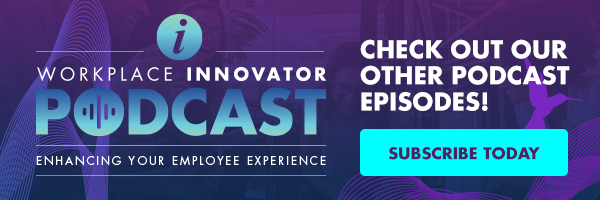Why Your Workplace Strategy Matters More Than Ever


Every company has the same basic goal: to run the business in the most efficient and profitable way. And every company has to worry about the performance of its employees, its real estate and its assets.
However, the way enterprises approach monitoring and managing these elements is much more complex. They need a comprehensive plan in place to ensure the workforce, workplace and equipment are all operating in dynamic alignment to maximize productivity and minimize costs.
That plan is better known as a workplace strategy. According to Gartner, an efficient workplace strategy integrates three key elements:
- The design of the physical work environment
- Workplace technology, including infrastructure and devices
- Practical human resources policies that empower employees and increase efficiency
Without a plan that addresses these three things, an enterprise is flying blind. And the results could be catastrophic. Here’s why now, more than ever, you need a smart workplace strategy.
How a Workplace Strategy Impacts Employees
Your workforce has the most influence on the success or failure of your business. And your employee experience has the greatest impact on the productivity and satisfaction of your workforce.
That’s why it’s no surprise more companies are prioritizing the employee experience. If improving EX isn’t high on your list of objectives, it should be. Here are just a few reasons why:
- When you consider the costs of recruiting, onboarding and lost productivity, replacing one employee can cost up to twice that employee’s salary.
- It’s a jobseeker’s market; since January 2015, the number of available jobs in the United States has been higher than the number of hirings, according to the Bureau of Labor Statistics.
- In a survey by Corporate Responsibility Magazine, over two-thirds of respondents said they would turn down a job offer from a company with a bad reputation, even if they were unemployed.
Now think about the building blocks of the employee experience:
- The physical office
- The tools and technologies provided to the employee by the employer
- The employer’s commitment (or lack thereof) to the health and success of the workforce
Each one of these elements is directly impacted by an organization’s workplace strategy. A well-researched, data-driven workplace strategy ensures employees have the mobility and flexibility to work in the ways that make the most sense for them individually. It will improve employee satisfaction and enable peak performance. A lack of strategy can lead to falling back on the traditional approach to the office environment. Unfortunately, this means rigidity and conformity—both of which are detrimental to productivity and efficiency.
If you want the ability to offer the kind of employee experience that not only draws top talent in but also convinces them to stay, you need a strong workplace strategy.
How A Workplace Strategy Impacts Your Finances
A poor (or absent) workplace strategy can certainly negatively impact the more emotional elements of an organization—such as the employee experience. But it can also have a profound effect on the more objective aspects of running a business. And when you can see the influence in terms of cost savings and business performance, it’s easier to understand the importance of having a well thought out, data-driven workplace strategy.
Smart space utilization and asset management are just as important to your workplace strategy as optimizing the employee experience. Considering corporate real estate is generally the second highest expense after employees, you need a solid plan for both the initial property investment as well as ongoing facilities management.
Incorporating space management software into your workplace strategy isn’t enough. You need to ensure you have the right tools to monitor space utilization and make smart decisions based on accurate, objective data. Otherwise you increase the risk of human error and using potentially outdated information to guide mission-critical decisions.
Similarly, your workplace strategy must include asset management. Do you know which assets are in high demand and which are just taking up space? Do you know which assets are improving the productivity of the workplace and which are hindering efficiency? Again, attempting to gain this insight will be next to impossible without the proper technology.
Building a Workplace Strategy
Developing your dynamic workplace strategy doesn’t have to be a daunting task, as long as you break it into smaller steps. However, before you get to where you want to go, you need to know where you are.
The first thing you must do is take a step back and look at your company objectively. Specifically, think about the employer brand, your company culture and how the business approaches workplace management. Once you have a clear picture of each of these elements, you can start to build your workplace strategy.
Ask yourself these questions:
- What exactly do you want to accomplish through applying your workplace strategy?
- What do your employees care about? How can you meet their needs and support their goals?
- How is your existing workspace being utilized? And does it encourage efficiency and productivity?
- What are your organization’s work patterns? Does it make sense to implement activity-based working, office hoteling or hot desking?
- What does the short-term and long-term future look like for the company?
Set your organization up for success. Build and implement your workplace strategy today. Your future self (and your employees) will thank you.
